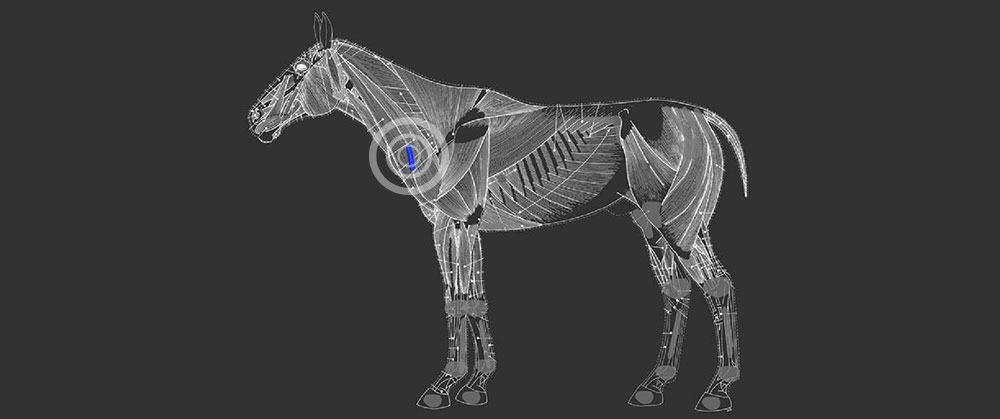Horse Brachiocephalic Tears and Strains
Brachiocephalic Tears and Strains


Local palpation along the seam elicits a reactive response which is non responsive to stretching, The whole muscle develops hypertonicity which the upper origin of the muscle near the head becomes hypersensitivity to touch. Common causes of this type of injury result from trauma such as falls or getting cast in the box which is further stressed by swimming in which the brachiocephalic is stretched (from forelimb hyperflexion) when the horse is swimming through the water. It is common to notice a slight head bobbing lameness with movement which may be due to associated fetlock pain with the injury. However as the muscle is required to pull the forelimb forward and allow for neck extension it is not surprising that this injury can cause movement defects.
The acupuncture work up is very effective in differentiating between a strain in the muscle and secondary hypertonicity from other regions of the body. Proper treatment can then be initiated in which acupuncture can be of primary benefit to the region. Acupuncture is used to restore the chi and blood stagnation locally and to reduce the brachiocephalic hypertonicity and pain. By doing this the muscle spindles are reset which allows for muscle lengthening and a reduction in hypertonicity.
Liniments and or ultrasound therapy are used locally to increase heat and reduce hypertonicity to allow the region to heal with reduced scar tissue, this reduces the chance of re injury in the region by enhancing elasticity of the region.
Passive stretching of the region is another ongoing therapy which can greatly enhance the results. For this injury the affected forelimb is picked up, flexed and drawn backward to stretch the brachiocephalic muscle. As well as this the head can be passively coached around to the girth of the opposite side of the strain, this allows the brachiocephalic to stretch and reset shortened muscle spindles. Both of these stretches can be done both before and after exercise daily.